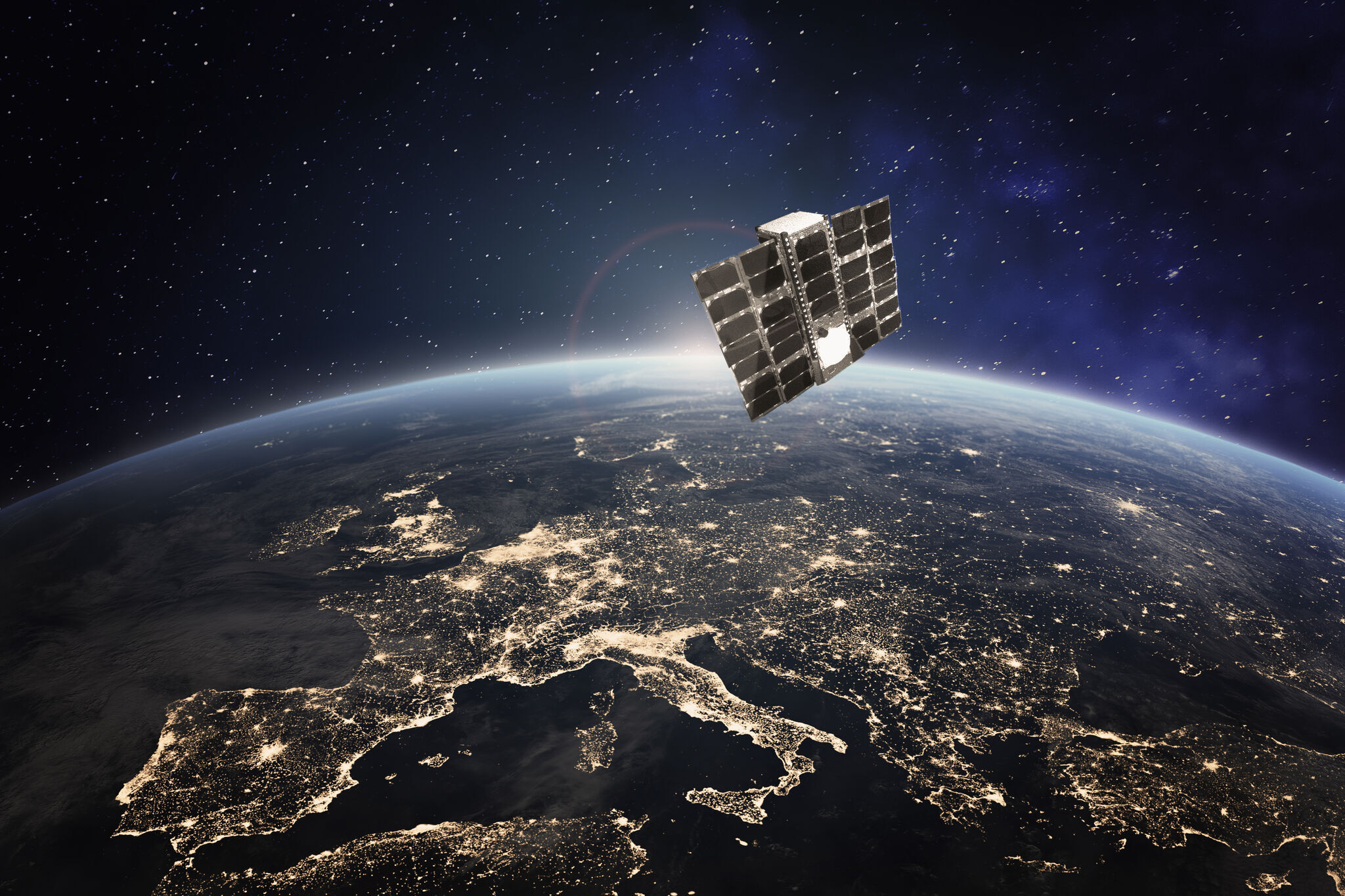ESA-supported LacunaSat-2B satellite successfully completes three-year mission and deorbits

LacunaSat-2B, a 3U satellite forming part of Lacuna Space's constellation, has successfully completed its three-year mission and deorbited in April 2024. The satellite was commissioned and operated by Open Cosmos under the Pioneer Partnership Project programme of ESA’s Connectivity and Secure Communications Directorate.
LacunaSat-2B brought together several key players in the space industry. Lacuna Space, based on the Harwell Science and Innovation Campus in the UK, developed the ground-breaking Internet of Things (IoT) payload technology over five years under the support of ESA's Advanced Research in Telecommunications Systems (ARTES) – in particular, the Core Competitiveness programme's Atlas element.
Open Cosmos, also based on the Harwell Campus, designed, built, launched, and operated the spacecraft under the ESA Pioneer Partnership Project programme. Once in orbit, operations of the spacecraft were shared between Open Cosmos, who managed the spacecraft platform, and Lacuna Space, who took care of managing the payload. Oxford Space Systems, another Harwell Campus-based company, designed and developed the key antenna for the payload.
LacunaSat-2B was launched in March 2021 to support the development of Lacuna's IoT service, which offers global connectivity for businesses and individuals to monitor assets even in the most remote regions. The spacecraft carried Lacuna's unique payload, representing the first solution to the challenge of accommodating massive-scale IoT reception in space. As the IoT market continues to grow, the capacity of many IoT satellite receivers is going to be overwhelmed, underscoring the importance of Lacuna's Internet Protocol (IP) to address this issue.
One of the key downstream services that LacunaSat-2B has helped demonstrate is IoT connectivity within the agriculture industry. Through its monitoring capabilities, the satellite enabled financial savings and increased efficiency in land, water and fertiliser use. This increased efficiency benefitted the whole agricultural supply chain, enabling customers to digitally transform their businesses, gain market traction, and help a key sector implement more sustainable practices.
The Pioneer and Core Competitiveness contracts both provided one year of support for the initial operations of the spacecraft and its payloads. After a year of successful operations, Lacuna Space decided to self-fund the platform and payloads for an additional two years. The spacecraft and payloads proved valuable in developing their IoT service, gathering crucial data and knowledge until the mission's end. Additionally, through the Pioneer programme, ESA has supported Open Cosmos in becoming a Space Mission Provider, enabling Lacuna Space to transition from trials and initial customer engagement to a commercial service whilst steadily building customer traction.
As ESA, Lacuna Space and Open Cosmos share a common commitment to sustainability, and the 'zero debris by 2030' aim, the spacecraft was intentionally launched with a naturally decaying orbit that continuously brought it closer to Earth. This approach was well within ESA’s Space Debris Mitigation requirement of a five-year deorbit, as the satellite completely burned up upon atmospheric re-entry.
“ESA is proud to have played a role in the successful lifespan of the LacunaSat-2B satellite, benefiting end users with reliable IoT connectivity across the globe for the past three years. Working with our partners, Lacuna Space and Open Cosmos, provides a success story in the ability of European and Canadian industry to operate on a global level, providing benefit to a multitude of sectors, as well as driving a more commercial and competitive space sector,” said Laurent Jaffart, Director of ESA’s Connectivity and Secure Communications.
Jon Pearce, Chief Commercial Officer at Lacuna Space said: “Since its launch in March 2021, the first of Lacuna’s second-generation satellites, LacunaSat-2B, has performed flawlessly, providing over three years of continuous connectivity within the Lacuna IoT service. This reflects the growth and ambition of the company as we transition from our second generation of IoT payload gateways, to our next generation which have at least an order of magnitude higher capacity and improved performance. As we successfully deorbit LacunaSat-2B, we reaffirm our commitment to preserving low Earth orbit’s cleanliness and accessibility for future users, including ourselves.”
"LacunaSat-2B was the second satellite launched by Open Cosmos, and the first under the pioneer contract. It marked a pivotal moment for the company. We are incredibly proud of the foundation technologies which we developed under the Pioneer programme which now form the baseline of all of our satellites,” said Jordi Barrera Ars, CTO at Open Cosmos. “Every time a satellite is launched, there is an element of risk associated with it. That we have a 100% success rate in orbit and satellites fulfilling the full three-year mission requirements is all down to the exceptional team of engineers we have developing this infrastructure."
Pioneer forms part of ARTES' Partnership Projects programme, which works with emerging industry players to provide innovative space-based services, creating a more competitive space ecosystem across ESA Member States.


